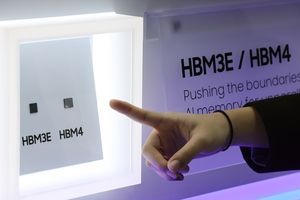The iPhone 15 series, which began its domestic release on October 13, has brought noticeable changes in the charging department.

Firstly, starting with the iPhone 15 series, Apple has finally stopped using its proprietary Lightning port for charging. The standardized USB-C type has been adopted. The reason why Apple, which had been insistent on the Lightning method, changed the charging port is due to a European Union (EU) law mandating the use of USB-C type ports on all electronic devices. With the adoption of the USB-C type, Android chargers, including Galaxy, can also be used.
Along with this, there are also changes in wireless charging. The new models are starting to support the wireless charging standard ‘Qi2’. This is the first time a smartphone supporting Qi2 has been introduced with the iPhone 15 series.
The ‘Qi’ standard for wireless charging
Currently, most smartphones use ‘Qi’ wireless charging. This is a wireless charging standard announced by the World Wireless Charging Consortium (WPC) for the first time in 2009.
The initial Qi 1.0 standard supported up to 5W charging. After passing through version 1.1, version 1.2 allowed up to 15W charging. However, the charging efficiency was somewhat reduced. If the smartphone moved slightly off the charger, the speed slowed or didn’t charge. While Qi1 significantly made wireless charging possible, it showed certain limitations.
The next-generation standard ‘Qi2’

Qi2, unveiled in January this year, is a new wireless charging standard that improves the existing Qi1. It features a magnetic attachment device, as seen in Apple’s MagSafe. While not precisely the same technology as MagSafe, the overall principle is the same. Apple is said to have provided technical assistance in developing the Qi2 standard.
Qi uses electromagnetic induction. Simply put, it creates an induced current in the smartphone through a magnetic field to charge it. To do this, there are copper wire coils inside both the wireless charger and the smartphone.
When the wireless charger is connected to a plug, a magnetic field is formed as the current passes through the copper wire coil. When the smartphone is placed on the wireless charger, the magnetic field formed by the wireless charger affects the coil in the smartphone, creating an induced current to charge it.

The problem is that if the distance between the smartphone and the wireless charger coil is slightly increased, the charging efficiency decreases. This is why charging doesn’t occur if the smartphone is slightly tilted in any direction on the charger. To achieve maximum charging efficiency, the coils of the smartphone and the wireless charger must be perfectly aligned, which is nearly impossible since you can’t see the location of the internal coil with the naked eye.
However, with the magnetic attachment device of Qi2, this can be easily resolved. The coupling between devices increases, reducing unnecessary power loss and heat generation.
What changes with the introduction of the Qi2 standard?

Various changes are expected after the introduction of Qi2. First, with the iPhone 15 series, it is possible to charge up to 15W even without MagSafe. Currently, iPhones only support up to 15W charging with MagSafe, and general wireless charging is limited to a maximum of 7.5W. However, if a wireless charger using the Qi2 standard is used, up to 15W charging can be utilized even without MagSafe.
It also appears that wireless charging will be available for various devices, not just smartphones. Until now, wireless charging was mainly applied to smartphones with flat backs. However, from Qi2, if the standard of the magnetic attachment device becomes diverse, it will be possible to accurately fix the charger on any shaped device, thus supporting wireless charging. In the future, wireless charging may be expanded to various devices, such as wearable devices and AR/VR headsets.
Qi2 standard support is coming soon, and more convenient wireless charging expected

The WPC has over 400 members, including most smartphone manufacturers. Anker and Belkin unveiled a wireless charger that supports Qi2 last September. Companies like Samsung Electronics, Microsoft, Lenovo, and Qualcomm, who are members of the WPC, are also highly likely to adopt the new standard. It is expected that Qi2 will be available on most smartphones and wireless chargers by 2024.
By. Kim Ha Young










Most Commented